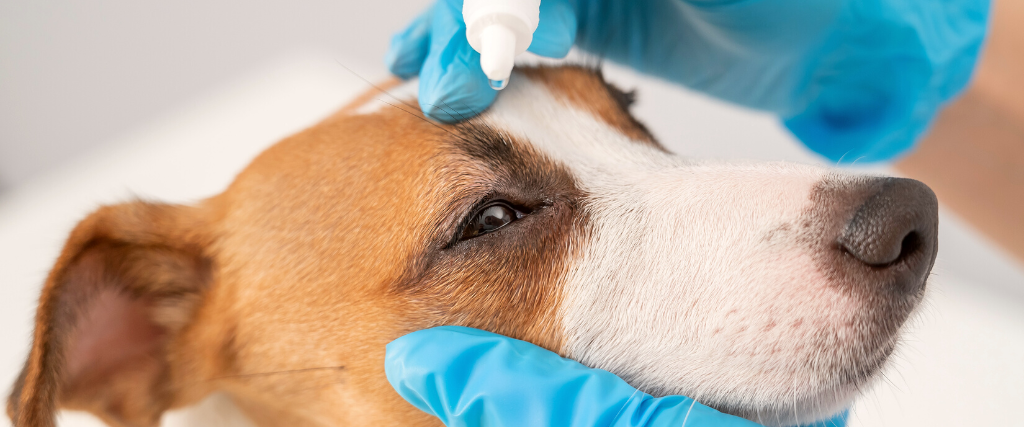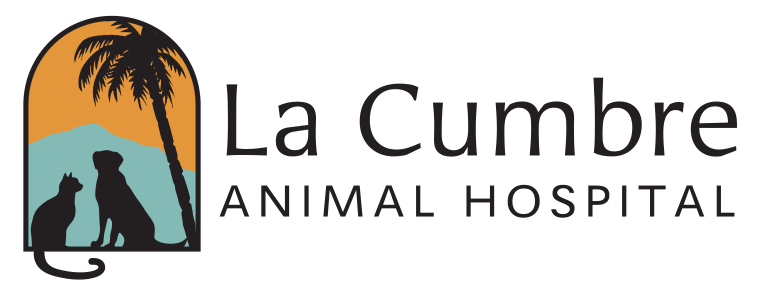If you're a dog owner, chances are you've been to your veterinarian concerned about your dog's eyes. Eye issues are extremely common in dogs, ranging from simple irritants to serious conditions. With vision deterioration common in senior dogs, dog owners must take care of their canine companion's eyes through the years. Delaying or ignoring treatment could mean a lesser quality of life as your dog struggles to navigate the world around them.
Common Dog Eye Problems
Similar to humans, dogs are susceptible to eye irritants and infections. This includes temporary problems resulting from a bacteria or virus, or irritants such as dirt and shampoo. While eye irritants and infections aren’t cause for great concern, more serious canine eye conditions require close evaluation, treatment, and sometimes even surgery.

Common dog eye problems include:
- Environmental irritants – Dirt, shampoo, or other foreign substances in the eye that cause redness and irritation
- Corneal damage – Damage from trauma to the cornea, such as a scratch or ulcer
- Dry eye (Keratoconjunctivitis Sicca) – Tear glands aren't producing enough tears to properly lubricate the eyes, resulting in the inability to clear the eye of dust and debris
- Pink eye (Conjunctivitis) – Viral or bacterial infection causing thick eye discharge and redness
- Eyelid mass – Typically a cyst or benign tumor that might require surgical removal
- Cataracts – Cloudy eyes that could eventually lead to blindness
- Glaucoma – Eye pressure caused by the inability to drain fluid properly, requiring medication and sometimes surgery
- Cherry Eye – When eyelid ligaments weaken and protrude from the corner of the eye
- Entropion – Eyelid abnormality that causes it to fold inward, causing eyelashes and hair to rub against the cornea
The ASPCA offers deeper insight into each of the above eye conditions.

Reasons to Not Delay Treatment
- They're Uncomfortable
Dog eye problems are uncomfortable and, in many instances, painful. Even a condition as simple as allergies requires an antihistamine to soothe their eyes. An untreated eye issue can lead to swelling, redness, tearing, and squinting—all of which feel uncomfortable for your dog. Delaying treatment prolongs their discomfort unnecessarily. The American Kennel Club lists signs of eye infection warranting an immediate veterinarian trip. - Making the Problem Worse
Dogs experiencing eye problems will attempt to alleviate their discomfort. This means they'll begin pawing at their eyes or attempting to rub them in other ways. The risk factor is that they could make the problem worse. For example, a dog experiencing conjunctivitis (pink eye) might paw at their eyes to the point of scratching its eye and causing corneal damage. - Spread of Infection
It's common for a dog to experience infection in just one eye if an irritant only entered one eye. However, that infection can quickly spread to the dog's other eye if left untreated. By pawing and scratching at the infected eye, the bacteria can infect the other eye, and now your dog is experiencing increased discomfort and requires more extensive treatment. In addition, an eye infection can easily be spread to other pets in the home. - Blindness
Untreated eye problems can lead to significant vision loss or blindness if left untreated or if treatment is delayed. This is true even for easily-treated eye conditions such as pink eye. While more serious eye conditions such as glaucoma and cataracts may lead to vision loss or blindness even with treatment, addressing the issue and starting treatment can help preserve your dog's vision for much longer. - The Solution is Often Simple
Many pet owners delay treatment and lean towards the idea of seeing if an issue will self-resolve before they schedule a veterinary appointment, knowing it’s going to cost them money. They're also aware that treatment could add to the cost. However, the vast majority of eye issues experienced by dogs are easily treated with antibiotics. Even if antibiotics don't work, the next steps could be simple ointments and eyewashes to soothe your dog's eyes and help them heal. These are all cost-effective solutions to alleviating your dog's eye problem versus the far more expensive treatment needed when an infection spreads and causes additional issues.
If you notice symptoms such as eye redness, swelling, discharge, squinting, excessive blinking, light sensitivity, pawing, or other changes in your dog's eyes, take them to your veterinarian for an evaluation. Contact us to learn more about the consequences of delaying or ignoring treatment when your dog is experiencing eye problems.
